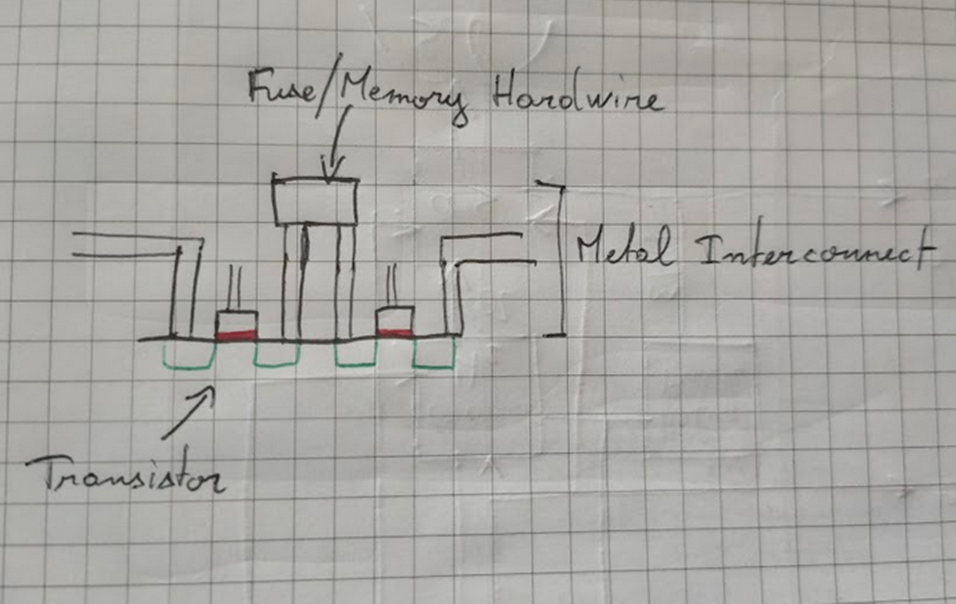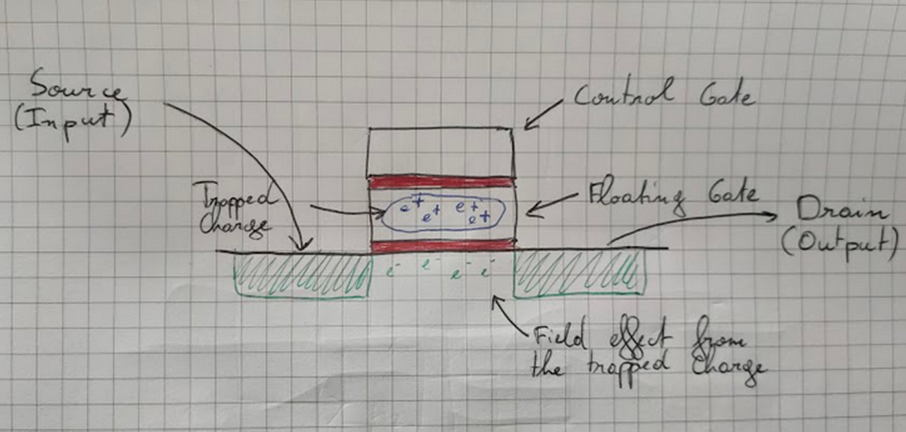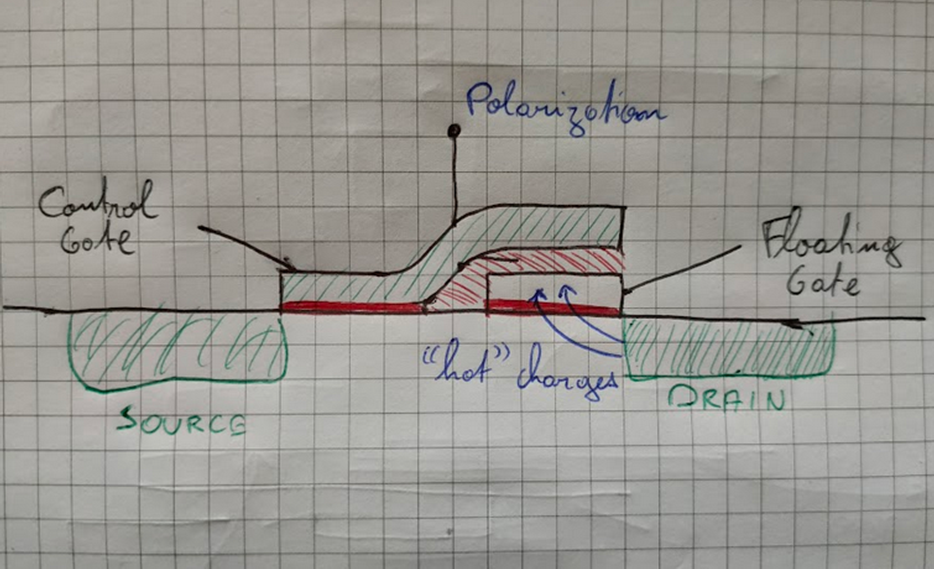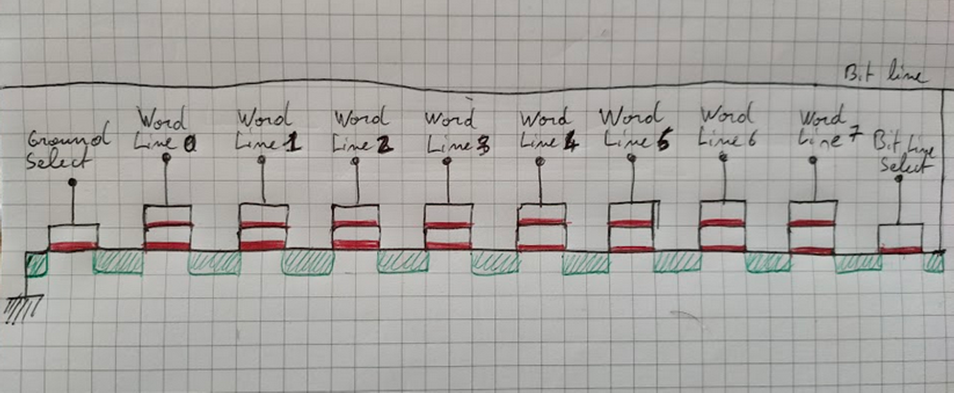Offline Memory Technology
Part 4: Logic Memories
By Baptiste Bouix
Using logic gates (AND, OR, XOR, NOT), it is possible to create a system where you input a value (an address) and you receive a predictable answer (a data output). This form of memory is sometimes called a lookup table, or Read-Only Memory. ROM is non-volatile and fast to access. Random Access Memory will instead store data dynamically, even faster, easily editable but volatile.
ROM to EPROM
Early 60s, this type of memory was made using discrete transistors arrays on a printed circuit board. The memory could be edited only by changing the circuits manually. When the first integrated circuit memory was introduced in 1965, it was fast, but neither editable nor cheap. Instead, the look-up table and the program code it stored were hardwired manually in the final layers of metal links between diodes. In 1969, the first PROM (Programmable Read-Only Memory) was commercialized: it could be programmed by the used by (definitively) burning selected fuses between diodes with high voltages.

Progress in silicon manufacturing and design allowed integrated circuits to compete with discrete memory in the early 70’s. The invention of the floating-gate Metal-Oxyde-Semiconductor Field Effect Transistor (FGMOSFET) and the use of the floating gate as a memory storage allowed the memory chips to be made in mass with silicon, and in addition, it made the memory erasable by a strong UV light: it is the Erasable Programmable Read-Only Memory (EPROM).

In a FGMOSFET, the information is stored as a trapped charge in the floating gate or lack thereof. The presence of a charge in the floating gate opens the flow of current between the source and the drain, absence of a charge closes it.
EEPROM
Research and development for a PROM that could be written and read with only electricity lasted for all the 70s, products released by various manufacturers used avalanche hot-carrier injection to erase the data in the floating gate, making those products Electrically Erasable PROMs (EEPROM). However, this phenomenon was damaging the memory cell: the number of read/write cycles was limited. This theoretical basis was used until the release of the Intel 2816, in 1979. This memory cell used Fowler-Nordheim tunneling rather than reverse voltage breakdown.

Every bit of data is stored in two transistors: one for reading, and one for writing. The other subcomponents of an EEPROM include data buses and clocks.
EEPROM is still a staple of the electronics industry and is widely used, its yearly global sales volume being around USD 800 million in 2020 and growing.
Flash Memory
The next major design change happened in 1980 with the invention of the Flash Memory by Toshiba. Rather than having a write/erase transistor per bit of data, this architecture mutualizes the erase function by block, making it denser and faster. Two types of flash memory emerge, named after the logic gates they are based on: the flash NOR and the flash NAND. The flash NOR has very few change in concept compared to the previous PROM, but is more effective. However, the flash NAND is more radical in its concept: rather than addressing to a single bit word, it addresses to and entire data string, called block. In this regard, an address in flash NAND memory is much like a timecode in an optical or tape storage, and is a similar function as a hard disk drive.

Silicon-based memories have benefited from the progress of the silicon technology, but flash NAND also had a special focus with the development of the vertical NAND. Rather than a fully planar technology, flash NAND was manufactured from the 2010’s in columns. For a similar cost, its density was multiplied by 100. In 2022, flash NAND state of the art manufacturing was around 100 to 250 layers.

Flash NAND vertical scalability
Flash Memory is on track to become the mass-storage reference solution. It has surpassed conventional hard drives in terms of new units in 2020. Flash NAND memory had a global sales volume around USD 50 billion in 2020, flash NOR USD 2 billion.
Whether it is RAM, EEPROM or Flash Memory, all those integrated circuits are considered “commodities”. Like oil or steel, there is a open market where suppliers sell their different “grades” of memory.
Stay plugged!

